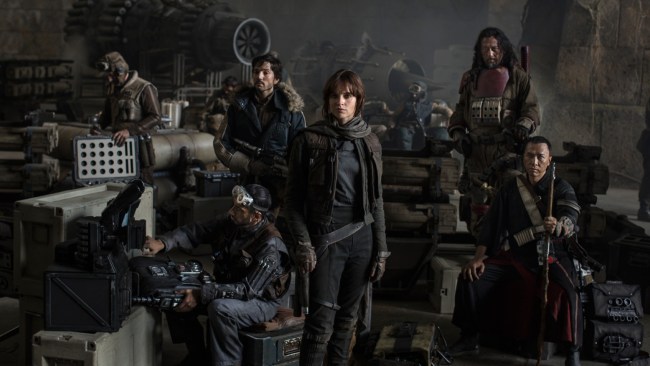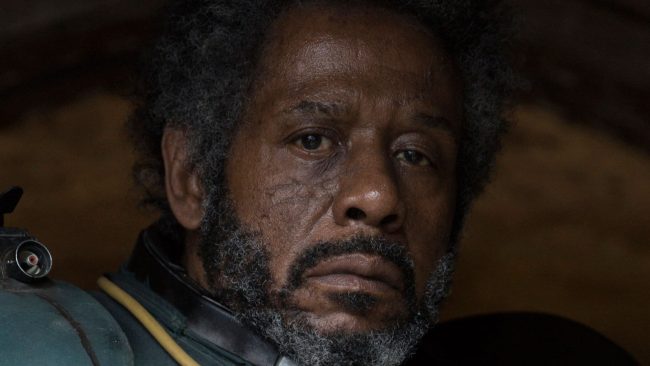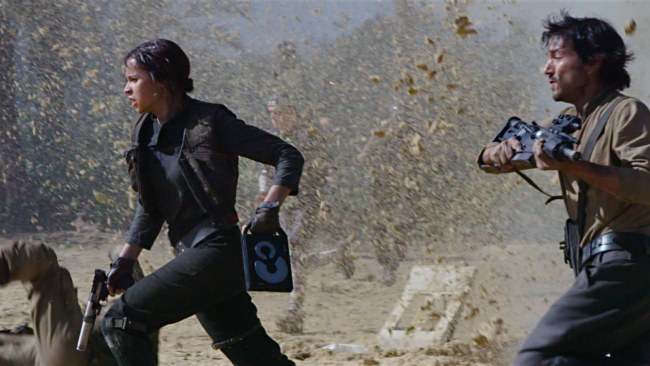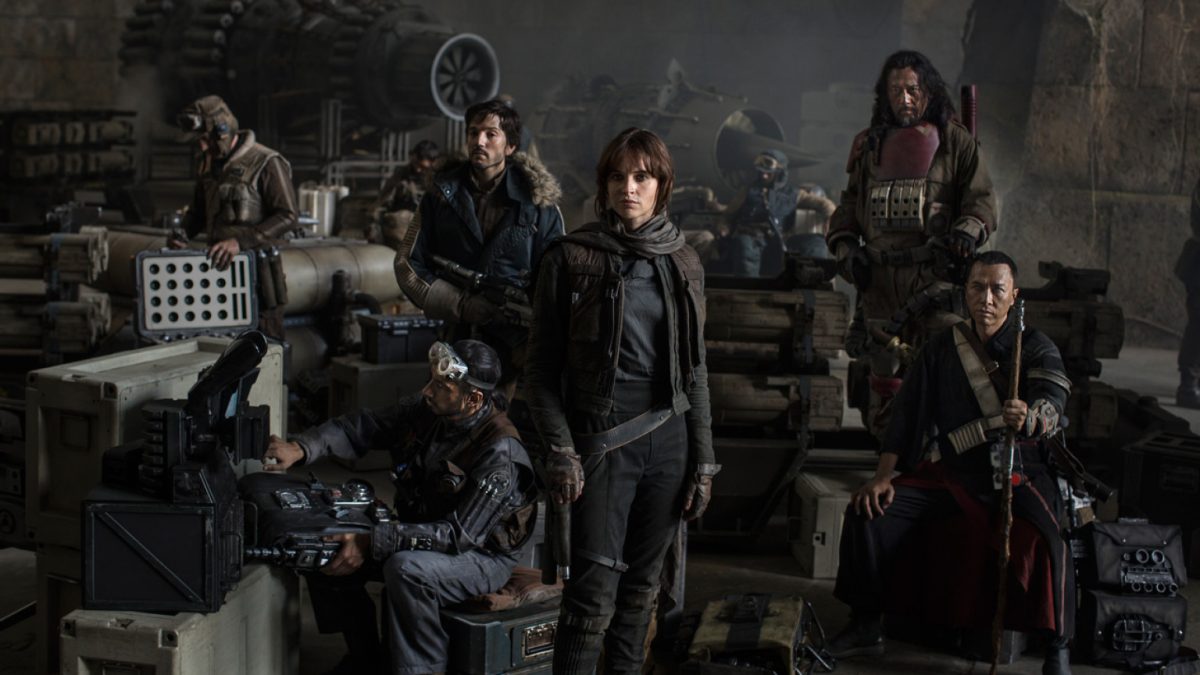Editor’s note: This video review originally appeared on Feminist Frequency and is cross-posted here with permission.
Shortly before Rogue One was released, a clip of the late, great Carl Sagan discussing the original Star Wars made the rounds on social media. In it, Sagan noted the fact that the people who populated the fictional sci-fi setting of the film were almost entirely white. It is wonderful that, 39 years after the release of that film, Rogue One rectifies this issue to some degree, giving us a vision of a galaxy far, far away that more closely reflects the diversity of humanity here on Earth. In A New Hope, the headquarters of the Rebel Alliance on Yavin 4 is populated almost entirely by white people. In Rogue One, the rebellion really does appear to be an alliance of people from a range of places and cultures, desperately united against a common enemy. It’s refreshing to behold, and it highlights the fact that the original Star Wars, and most films out of Hollywood before and since, function to center and glorify whiteness, marginalizing people of color in the process.

But while Rogue One succeeds in the big-picture sense of depicting a crucial moment in the rebellion’s struggle against the mighty and oppressive Empire, it fails to make us care about the individual characters who are swept up in this conflict. The film is so densely plotted, so busy advancing the particulars of its story or plowing through one of its many visually impressive action scenes, that it rarely takes the time to breathe and let us get to know the people who are doing the fighting.
So as visually impressive as they are, the film’s space battles and ground skirmishes aren’t as absorbing as they would be if we felt more of a connection to the characters. And when major characters die, you can almost feel the film straining to generate some powerful emotion that it hasn’t earned because it hasn’t taken the time to develop those characters. If you’re a Star Wars fan, some of the most effective moments in Rogue One may be those times when familiar characters from Episode IV show up, because we’ve already developed an emotional investment in those characters. Rogue One uses this to its advantage, occasionally tossing in familiar characters or visual references to Episode IV purely as a bit of fan service, rather than because it’s important to the story this film is telling.

Rogue One’s central character is Jyn Erso, a young woman with a close personal connection to the development of the Death Star, a connection the Rebellion hopes to exploit in order to deal with the Empire’s terrifying new weapon. Unfortunately, despite being at the center of the story, Jyn is the least distinctive character in the film’s core cast of heroes. She doesn’t seem like anyone in particular.
At least the people surrounding her have some defining characteristics. Diego Luna’s Cassian is a freedom fighter haunted by something in his past that makes fighting the Empire deeply personal to him. Donnie Yen plays Chirrut Imwe, a blind disciple of the Force whose connection with his gruff friend and protector Baze Malbus is the most emotionally involving relationship in the film. Even Saw Gerrera, played by an underused Forest Whitaker, is more well-defined than Jyn; Gerrera’s a former ally of the Rebellion who has been written off as too much of a militant extremist, and who now fights his own kind of resistance.

Both Cassian and Saw Gerrera are characters who have done morally questionable or reprehensible things in the name of fighting back against the Empire, and while previous Star Wars films have always presented the conflict between the Rebellion and the Empire in very stark terms of good vs. evil, Rogue One at least flirts with questioning whether it’s possible to go too far, even when your cause is just. You can see more clearly here than in any other Star Wars film how one person’s freedom fighter might be another person’s terrorist, and how desperate times may indeed call for some truly desperate measures. Still, it’s clear that Rogue One isn’t really interested in exploring these questions, and doesn’t want viewers to dwell on or even think about the tremendous loss of life that happens on the Imperial side of the conflict as star destroyers explode and stormtroopers are slaughtered.
And for all the talk from some people about how Rogue One and films like it constitute some kind of feminist propaganda, it doesn’t take much to see that this is still very much a universe of men. There are a few female pilots in the Rebellion fleet this time around, and Mon Mothma is present as the leader of the Alliance, but in the core cast, Jyn Erso is the lone woman surrounded by many, many men. So while it’s great to see characters like Jyn in Rogue One and Rey in The Force Awakens having prominent roles, it hardly indicates an end to patriarchy, either in the Star Wars universe or in the film industry.

In the end, Rogue One works well as a narrative that fills in some gaps in other, better films, explaining not just how the rebels got their hands on the Death Star plans, but also why the Death Star has such an easily exploitable weakness in the first place. But because so much of its focus is on communicating plot and not enough focus goes into developing its characters and their relationships with each other, the all-important human element gets a bit lost in all the sound and fury of war.
Carolyn Petit is a longtime professional game critic and currently the managing editor of Feminist Frequency.
Want more stories like this? Become a subscriber and support the site!
—The Mary Sue has a strict comment policy that forbids, but is not limited to, personal insults toward anyone, hate speech, and trolling.—
Follow The Mary Sue on Twitter, Facebook, Tumblr, Pinterest, & Google+.









Published: Dec 23, 2016 02:43 pm